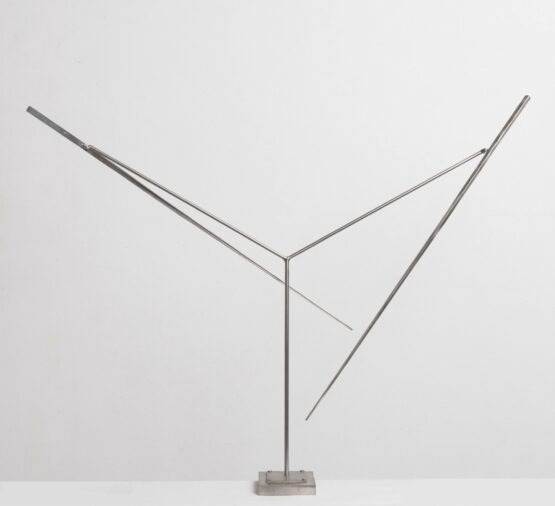In a studio exhibition, Galerie Thomas presents a group of Rickey's smaller, signature works that allow a focused look at his art, which is as fascinating as it is distinctive.
Painter and draftsman George Rickey began sculpting relatively late. Inspired by the early sculptures of Alexander Calder, Rickey quickly became one of the most important representatives of kinetic art. His often large, but always filigree stainless steel sculptures stand out for their precise, sober and laconic formal language. Rickey constructs fine curved or geometrically rectangular lines and surfaces in a precisely balanced relationship to one another in such a way that there is never anything completely random or disorganised about the individual movements at the joints of the elements. Rickey’s sculptures rather reveal a harmonious choreography, which not only plays with the work's own appearance, but also gains power from the contrast between material, form, size and an apparent lightness, even weightlessness of movement. Rickey describes his fascination with the movement triggered primarily by the air, the vitality and temporality of it, but also its special aesthetic quality, as follows:
"The types of movement available to me are, for the most part, observed every day in our natural environment. In clouds, the sea, falling leaves, blowing grass, sails, soaring birds and flying fish, slamming doors and shutters, hurricanes, whirlwinds and sandstorms, sometimes silent, sometimes shuddering or roaring, sometimes as music and sounds streaming through lips, reeds or pipes, the air moves on."
Moreover, Rickey's works succeed in integrating the space surrounding them into their play of movement and thus redefine it, for the viewer's perception of the space is now only possible in relation to the interaction with Rickey's sculpture. This way, Rickey not only anticipates contemporary developments such as minimal or concept art, but already refers to later time-based and virtual art forms.
Works by George Rickey, who participated in the documenta several times, can be found in many public places and in numerous museum collections around the world.
